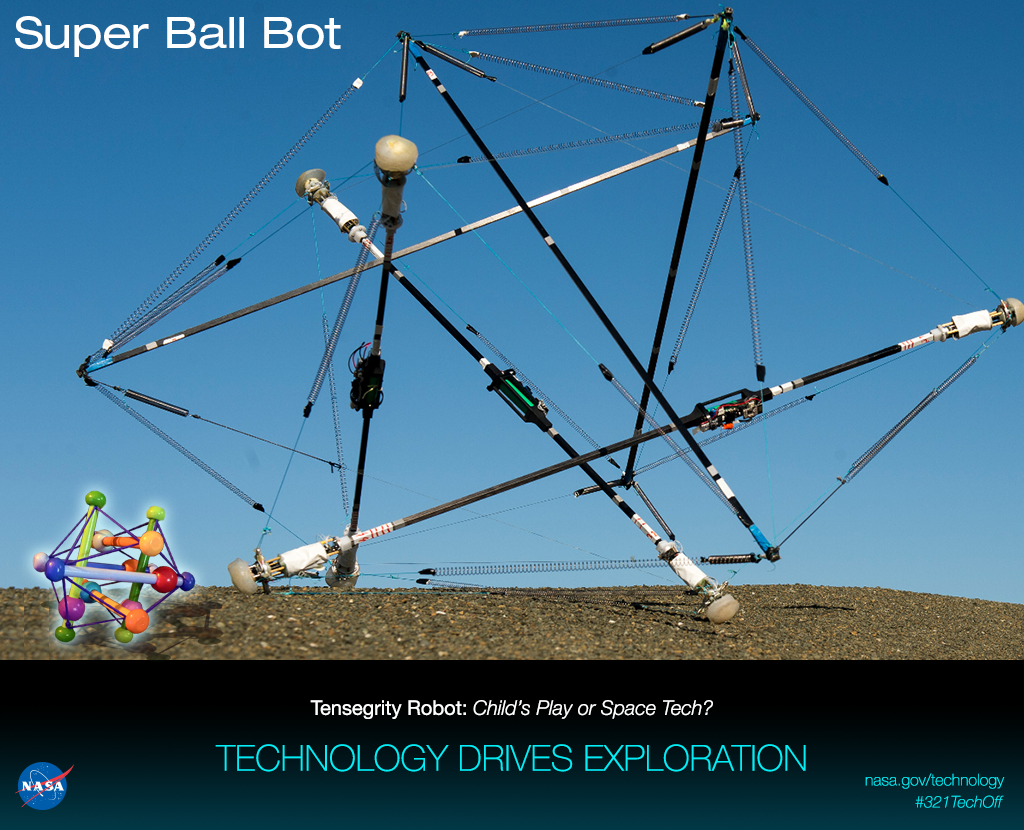Super Ball was built by researchers from the NASA Ames Research Center and the University of California San Diego Coordinated Robotics Lab. Tensegrity robotics are supported by NASA for Space missions that emerge.
“Tensegrity robots will be able to obtain data quickly and reliably in areas with discovery problems. “
Super Ball was built by researchers from the NASA Ames Research Center and the University of California San Diego Coordinated Robotics Lab. Tensegrity robotics are supported by NASA for Space missions that emerge. The robots use tensegrity to improve the structural stability of tensile materials. 6-bar tensegrity icosahedron made of six metal rods, each approximately 2 meters long, connected by cables.
These systems have come to an important place among exploration targets of NASA due to their durable, low cost and light weight. Teams of small, foldable robots, each weighing only a few kilograms, will be suitably packed during launch and will be reliably separated and unpacked at the destination. Tensegrity robots will be able to obtain data quickly and reliably in areas with discovery problems. Landing on the ground can be difficult due to the precision of robots in current technology. These robots are sensitive and can be landed with extra equipment to prevent damage. However, since the Superball robot is developed based on tension integrity, it can help to make low-cost and equipment-free landings.
Multi-purpose tensegrity robots are lightweight and have a structure that absorbs strong impacts so they are more resistant to failures. These robots can easily absorb drops of 3-4 meters and easily roll over rocky hills and cross bumpy surfaces. Thanks to this feature, it can be sent to other planets for research without human care. Their missions can be carried out safely and cost-effectively.
